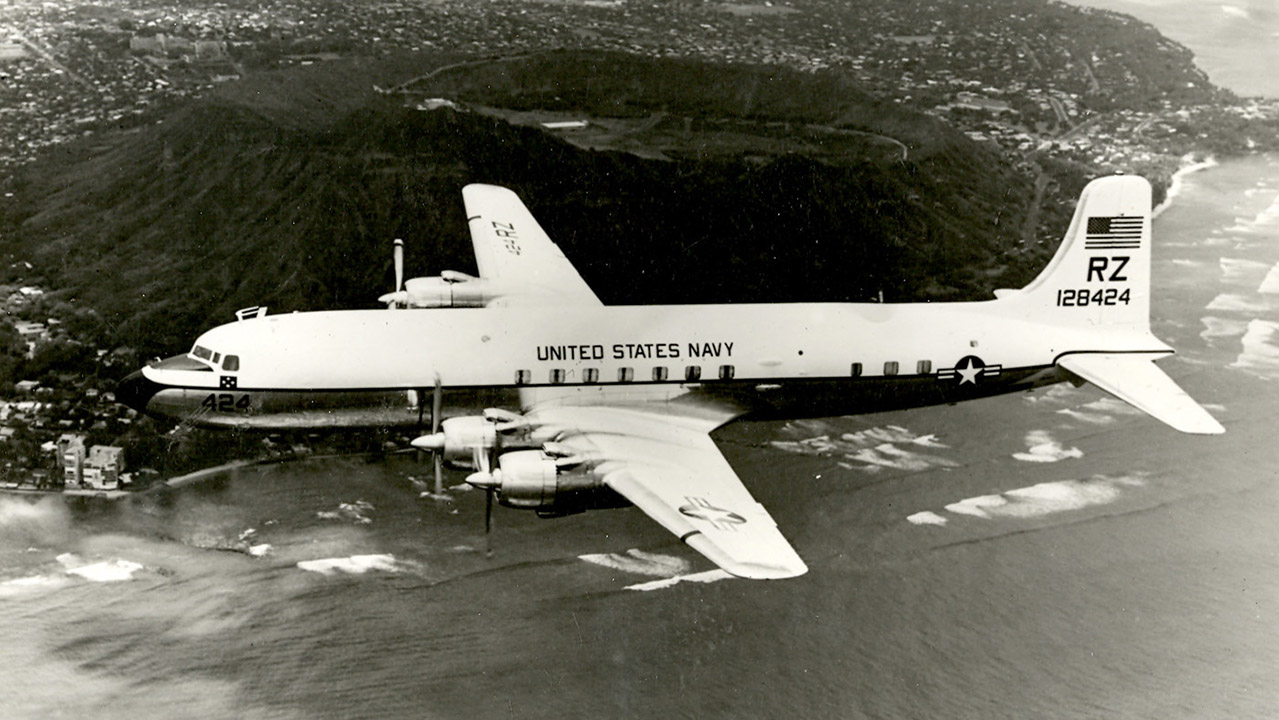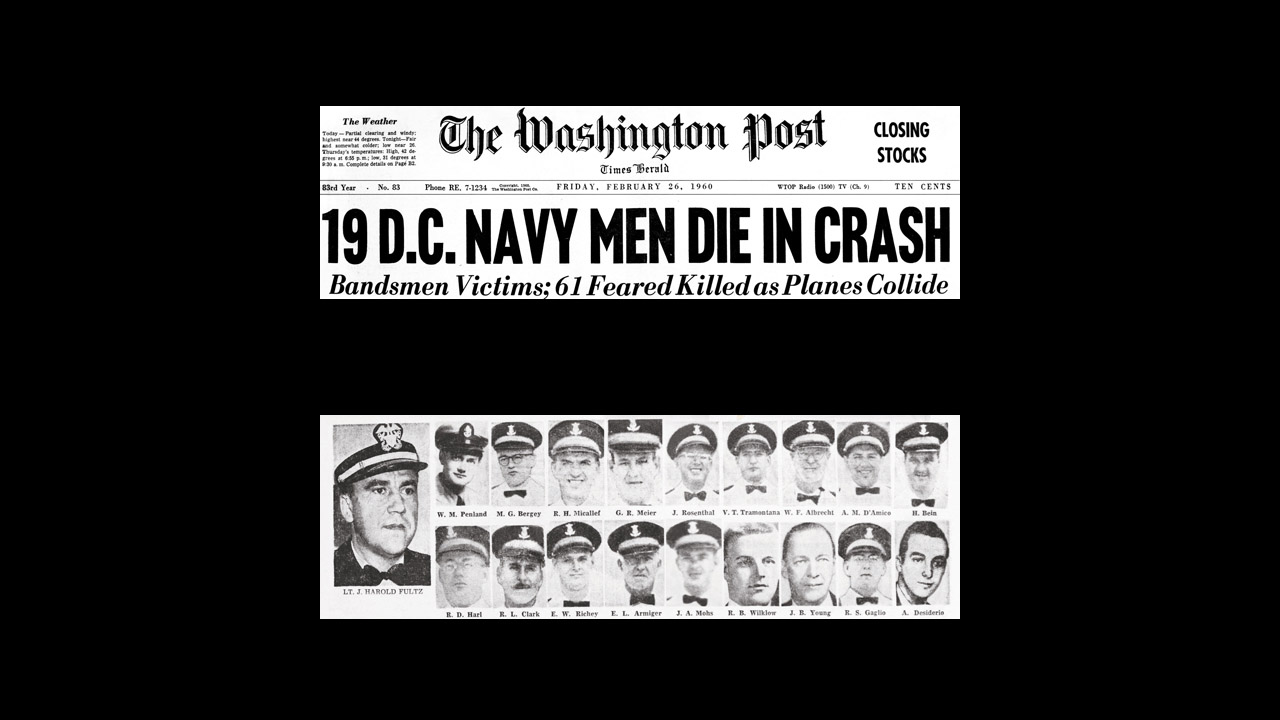Unraveling Memorial Music Plaque Mystery
April 22, 2025
There’s an obscure memorial plaque on the wall outside the Huntington High School music department office commemorating the life and death of 1953 alum Milton George Bergey, who perished in a February 25, 1960 mid-air collision over Rio de Janeiro with 18 fellow members of the United States Navy Band. The group was flying to Brazil to play at a diplomatic reception featuring President Dwight D. Eisenhower and Brazilian President Juscelino Kubitschek.
Mr. Bergey began his musical career in the fourth grade in Huntington UFSD. He studied privately with famed flutists Hendrick deVries and William Kincaid. After graduating from the old high school on Main Street currently used as town hall, he attended and graduated from Curtis Institute of Music in Philadelphia.
Described as a “brilliant musician,” Mr. Bergey played at the Tanglewood Music Festival in Massachusetts while still in junior high school and with the Brooklyn Symphony while still a high school student and later with the Philadelphia Symphony.
He attended the Curtis Institute on a full scholarship and graduated in 1957 with high honors. He enlisted in the US Navy in April 1957 and three months later was accepted into the US Navy Band as first flutist.
Mr. Bergey performed in the cavernous auditorium of the brand new Huntington High School in the spring of 1959 with the US Navy Band and was featured in a flute solo.
Born in Bridgeport, Connecticut on October 13, 1935, Mr. Bergey moved to Huntington with his parents in 1940. He grew up on Woodland Drive in the Wincoma section of Huntington and was the first flutist with the US Navy Band. A special group of 19 band members had been chosen to fly to Brazil and perform at the embassy reception.
Mr. Bergey’s final tour with his US Navy bandmates got underway when the group flew to Trinidad and boarded the US Macon, a heavy cruiser. The band played in concert in Rio de Janeiro and then headed south to Buenos Aires. But when President Eisenhower visited Brazil, a special section of the band returned via plane to perform at the diplomatic reception.
The four engine US Navy DC-6 rammed a Brazilian passenger twin engine DC-3 in heavy clouds and fog near Sugarloaf Mountain above Rio de Janeiro at about 1:10 p.m. The plane Mr. Bergey was flying in “fell apart” in the air and “plunged into a beach on Guanabara Bay. Mr. Bergey was only 24 years old.
Miraculously, three men aboard the US Navy plane survived, but all 19 musicians were killed. The complete death toll was 61.
“President Eisenhower was extremely upset and saddened as he knew band members personally,” White House Press Secretary Jim Haggerty said.
A funeral service was held aboard the Cruiser Macron by chaplain Lt. Cmdr. RW Below. “In a real sense these men are heroes,” he eulogized. “They gave their lives in the cause of peace. They were ambassadors in the highest and best sense; speaking a universal language to the hearts of men without regard to border, breed or birth.”
A memorial service was held at Old First Church on Main Streetacross from the old high school attended by Mr. Bergey. A crowd of 400 of the musician’s friends crowded into the church for the service led by Rev. Dr. William S. Hess, who quoted English poet Robert Browning’s “Abt Vogler.”
Mr. Bergey was survived by his father, Milton, who was an engineer at Grumman Aircraft Corp; his mother Marion and his 17 year old brother, who was a Huntington High School senior at the time.
Mr. Bergey’s funeral and burial were held at Arlington National Cemetery in Section 48. The US Marine Band played taps over the graves of the band members.
The crash and aftermath were covered by The New York Times and the Washington Post and news media outlets across the country and world. Fifty years later the Washington Post covered the US Navy Band’s visit to Arlington National Cemetery for a memorial performance commemorating the 1960 tragedy. The newspaper headlined its story, “Remembering the day a Navy band’s music died.”
The Washington Post article noted that “it was blustery and cold” at the cemetery “and the wind shook the branches of the giant tree that now shelters the graves of 14 lost musicians of the US Navy Band.” (The other five members are buried elsewhere.)
Following the tragedy, a memorial concert was held at Huntington High School and planning commenced for a ceremony where the memorial plaque affixed to the wall outside the music department office would be dedicated.
The Sunday, February 19, 1961 ceremony was held in Room 102 at 3 p.m. It included formal acceptance of a full sound system for the main music room at the high school. Principal Robert Cushman served as master of ceremonies and introduced guests and dignitaries. Rev. Richard Schlaffer provided the invocation. Huntington UFSD Chairman of Music Rufus Kern made a presentation of the new equipment, which was accepted on behalf of the district by Huntington School Board President Alexander Wilson. Mr. Kern formally dedicated the equipment and plaque to Mr. Bergey, whose family was in attendance. The equipment was then demonstrated. The ceremony included a concert.


